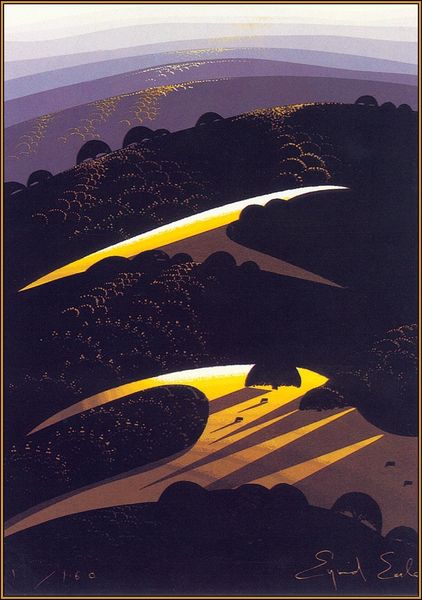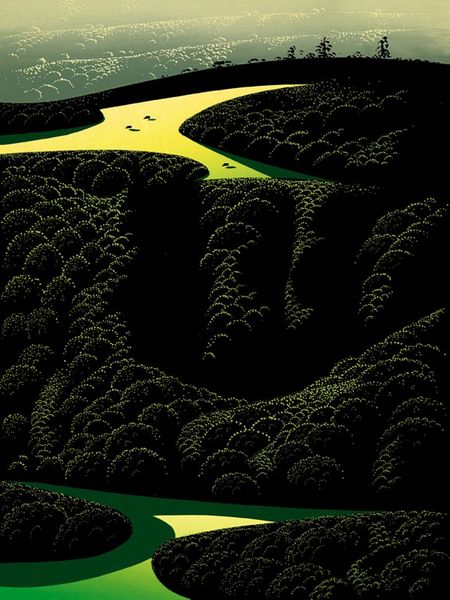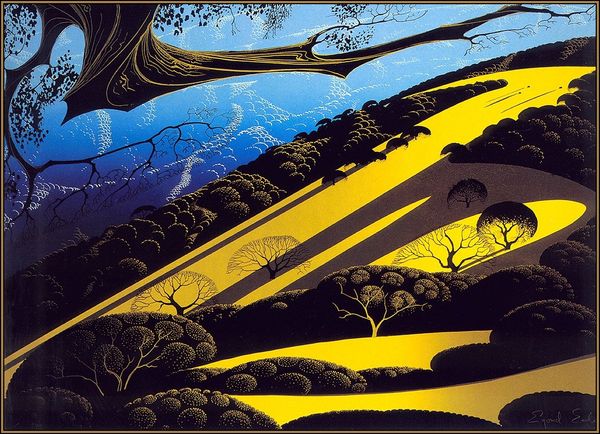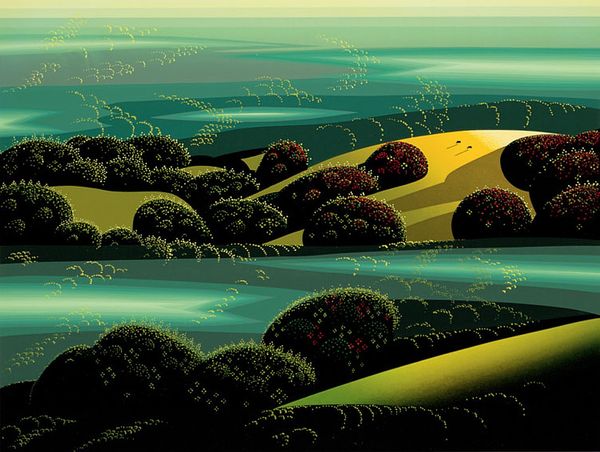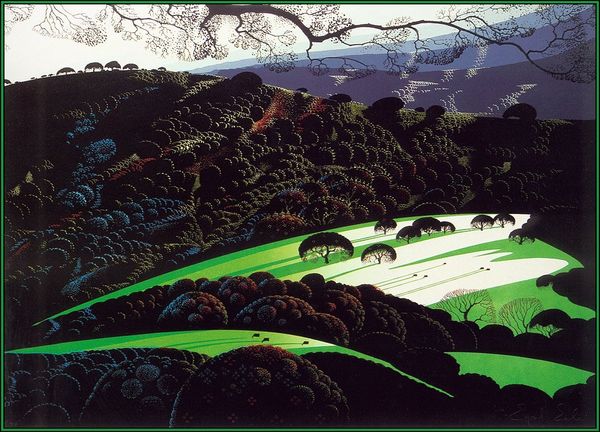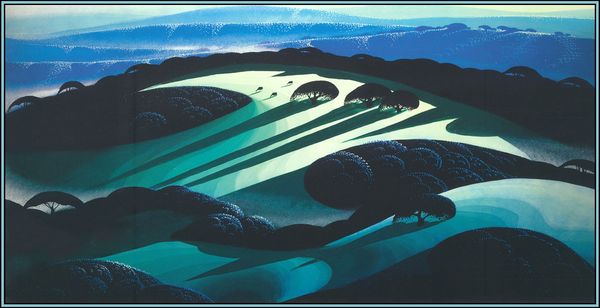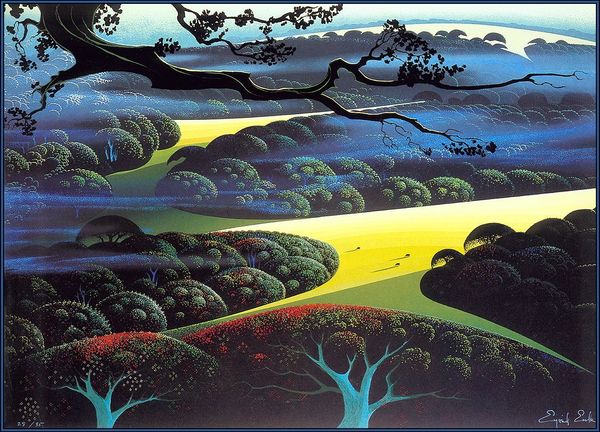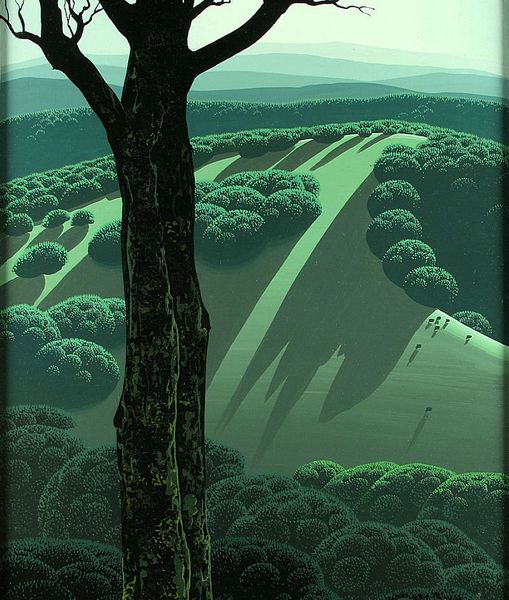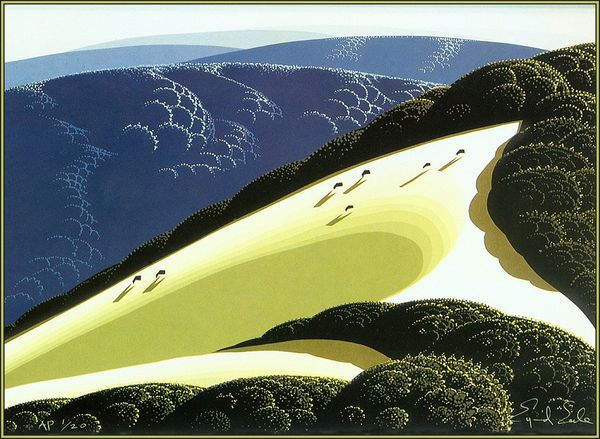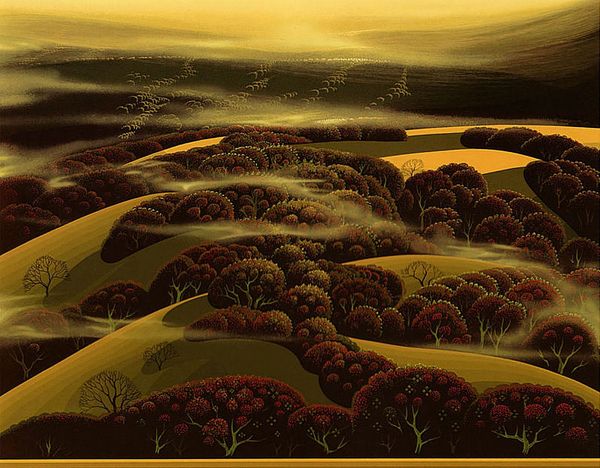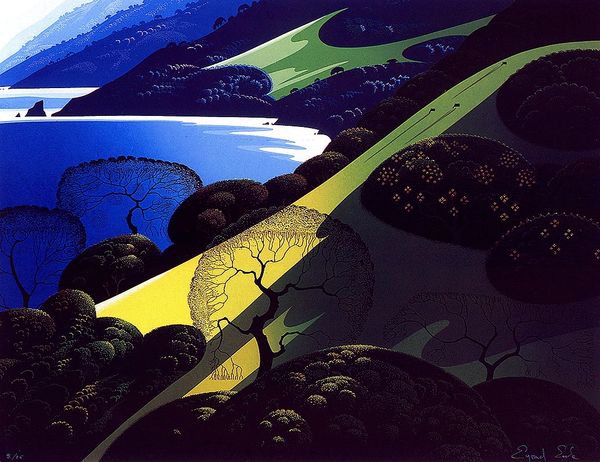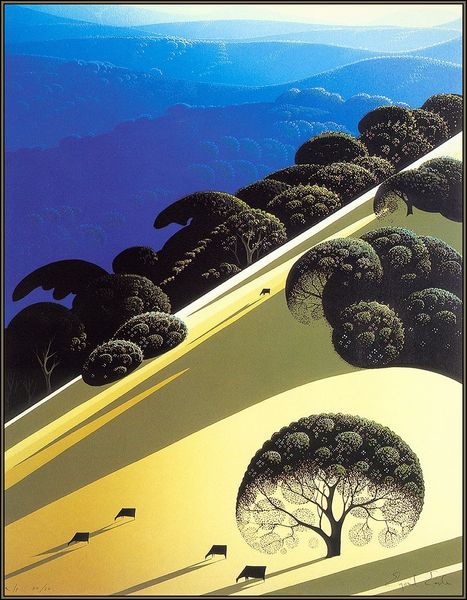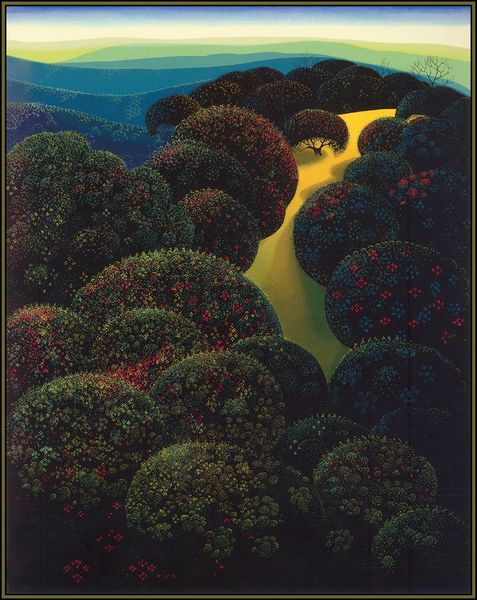
painting, enamel
#
painting
#
landscape
#
geometric
#
enamel
Copyright: Eyvind Earle,Fair Use
Curator: Immediately, this evokes a sense of slightly surreal tranquility. The intense light sources, and geometric shapes make this painting really calming. Editor: We're looking at "Three Little Fields," an enamel painting crafted in 1991 by Eyvind Earle. Earle, though largely known for his background work on Disney’s Sleeping Beauty, produced landscapes with his distinctive formal approach for over seven decades. I'm interested to know what socio-historical factors shaped this artist? Curator: Given his time with Disney, and the socio-political backdrop of the 1990's it’s reasonable to suggest an artist expressing anxiety with an artwork depicting a return to nature. It's a seemingly pleasant scene, but there’s almost a manufactured feel about the geometric repetition. Were such idylls truly available at the time? And who did access to that 'tranquility' serve, culturally? Editor: A crucial observation. While I appreciate your critical reading, let's also acknowledge the artist’s stylistic consistency across media. What were the institutional spaces showing artwork of this style and what narratives were present during his lifetime? Were ideas like that questioned during his moment? Or is your lens distinctly contemporary? Curator: My position is definitely contemporary! It is shaped by awareness around how landscapes have been weaponized to endorse oppressive politics! But beyond that context, I cannot shake how, aesthetically, the composition reminds me of stage scenery... perhaps informed by the artist’s background in Hollywood production. Editor: True. Thinking about the popular culture of that time, his visual lexicon pulls a wide cultural scope, spanning decorative arts and cartoonish form. The artist manages a compelling integration of those. Thanks to his unique application of enamel to depict the natural world with such detail and color harmony! Curator: Indeed. The visual precision and almost luminous colour really sets it apart. I see this painting as a powerful, if perhaps unconsciously realized, reflection on the human desire to control and curate the natural world around us, even as we claim to simply appreciate it. Editor: A wonderful insight to consider, inviting us to understand the art within ever-changing contexts and discourses!
Comments
No comments
Be the first to comment and join the conversation on the ultimate creative platform.
